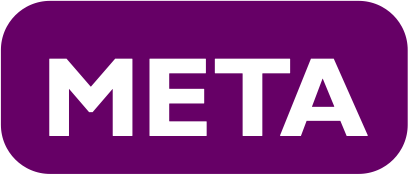Chapter 10 Hypertension in the general population
10.1 Rationale for treating HTN
See treating ABP in CKD.
10.2 Treatment thresholds (in general population)
The benefit of treating ABP in high CVS risk and at systolic >160 mmHg is established. Several trials have attempted to refine the lower limit (of blood pressure and CVS risk) at which treatment is beneficial:
ACCORD (2010):  - systolic target <140 vs. <120 mmHg in patients with T2DM. Intensive control did not reduce rates of primary composite outcome (non-fatal MI, non-fatal stroke, cardiovascular death) but was associated with more adverse events. (NB there was also an intensive vs. conventional glycaemic control study.)
- systolic target <140 vs. <120 mmHg in patients with T2DM. Intensive control did not reduce rates of primary composite outcome (non-fatal MI, non-fatal stroke, cardiovascular death) but was associated with more adverse events. (NB there was also an intensive vs. conventional glycaemic control study.)
SPRINT (2015): 
 - systolic target <140 vs. <120 mmHg in patients with ABP >130 and increased CVS risk but NOT diabetes. Intensive control reduced risk of primary composite outcome (MI, ACS, stroke, heart-failure, cardiovascular death).
- systolic target <140 vs. <120 mmHg in patients with ABP >130 and increased CVS risk but NOT diabetes. Intensive control reduced risk of primary composite outcome (MI, ACS, stroke, heart-failure, cardiovascular death).
NB - when the final trial data were analysed in 2021 after some additional outcomes had been adjudicated, the benefits were broadly similar. Rates of AKI, electrolyte abnormalities and syncope were higher in the intestive control group.
SPRINT - CKD subgroup (2017): pre-specified CKD subgroup in SPRINT trial. CKD did not modify effects on primary outcome; renal outcomes did not differ between treatment arms.
Why did results of SPRINT and ACCORD differ? Perhaps ACCORD was relatively under-powered; perhaps it reflects differences in study population (e.g. greater proportion of heart failure in SPRINT).
HOPE-3 (2016):  with factorial design - candesartan plus hydrochlorothiazide vs placebo in patients with intermediate CVS risk. No difference in primary outcome (MI, stroke, cardiovascular death). There was a benefit in pre-specified subgroup: those with ABP in upper third = systolic >143.5 mmHg. (There was also rosuvastatin vs. placebo comparison which was effective in this intermediate risk group.)
with factorial design - candesartan plus hydrochlorothiazide vs placebo in patients with intermediate CVS risk. No difference in primary outcome (MI, stroke, cardiovascular death). There was a benefit in pre-specified subgroup: those with ABP in upper third = systolic >143.5 mmHg. (There was also rosuvastatin vs. placebo comparison which was effective in this intermediate risk group.)
10.3 Mode of intervention
What is the best way to monitor blood pressure?
Agarwal et al. (2011):  - home-based blood pressure monitoring (compared to office-based) results in lower systolic blood pressure and less therapeutic inertia.
- home-based blood pressure monitoring (compared to office-based) results in lower systolic blood pressure and less therapeutic inertia.
Can life-style intervention achieve blood pressure reduction?
DASH (1997):  - effect of high-fruit, low-fat diet on blood pressure. Blood pressure was lower on the intervention diet.
- effect of high-fruit, low-fat diet on blood pressure. Blood pressure was lower on the intervention diet.
Choice of anti-hypertensive agent: are some better than others at preventing cardiovascular events?
ALLHAT (2002): 
 - chlorthalidone vs. amlodipine vs. lisinopril in patients 65 yrs with one other RF. No difference in primary outcome (fatal and non-fatal MI). Blood pressure was lower in chlorthalidone group. Some secondary outcomes were better in chlorthalidone group.
- chlorthalidone vs. amlodipine vs. lisinopril in patients 65 yrs with one other RF. No difference in primary outcome (fatal and non-fatal MI). Blood pressure was lower in chlorthalidone group. Some secondary outcomes were better in chlorthalidone group.
LEGEND-HTN (2019):  - large-scale analysis of real-world data in ~ 5 million first-time users of anti-hypertensives. Thiazides better than ACEi at preventing MI, stroke hospitalisation for CCF. Non-dihydropyridine CCBs were inferior to all other classes of anti-hypertensive.
- large-scale analysis of real-world data in ~ 5 million first-time users of anti-hypertensives. Thiazides better than ACEi at preventing MI, stroke hospitalisation for CCF. Non-dihydropyridine CCBs were inferior to all other classes of anti-hypertensive.
Is dual RAS blockade more effective than single-agent blockade?
ONTARGET (2008):  - telmisartan, ramipril or both in patients with diabetes or vascular disease. No benefit of dual RAS blockade (on primary composite cardiovascular outcome) but increased risk of syncope and renal failure.
- telmisartan, ramipril or both in patients with diabetes or vascular disease. No benefit of dual RAS blockade (on primary composite cardiovascular outcome) but increased risk of syncope and renal failure.
See also dual RASi in diabetic nephropathy.
Does timing of anti-hypertensive therapy matter?
No it does not!
TIME (2022):  - morning vs. evening dosing of anti-hypertensives (n = 20,000). No difference in primary composite cardiovascular outcome.
- morning vs. evening dosing of anti-hypertensives (n = 20,000). No difference in primary composite cardiovascular outcome.
NB - The high-profile HYGIA trial had major methodological flaws.
10.4 Special populations
Is anti-hypertensive therapy beneficial in the very elderly?
HYVET (2008):  - anti-hypertensive therapy (with indapamide +/- perindopril) vs. placebo in the very elderly ( 80 yrs) with ABP >160 systolic. The treatment group had a reduction in the rate of fatal and non-fatal stroke and fewer adverse events.
- anti-hypertensive therapy (with indapamide +/- perindopril) vs. placebo in the very elderly ( 80 yrs) with ABP >160 systolic. The treatment group had a reduction in the rate of fatal and non-fatal stroke and fewer adverse events.
What is the best strategy in resistant hypertension?
PATHWAY-2 (2015):  - cross-over RCT - spironolactone vs. bisoprolol vs. doxazosin m/r vs. placebo in hypertensive patinets already on three agents. Spironolactone was the most effective at lowering blood pressure.
- cross-over RCT - spironolactone vs. bisoprolol vs. doxazosin m/r vs. placebo in hypertensive patinets already on three agents. Spironolactone was the most effective at lowering blood pressure.
10.5 Renal dennervation
SYMPLICITY HTN-3 (2014):  - renal denervation vs. sham procedure in resistant hypertension. No difference in office or ambulatory blood pressure at 6 months.
- renal denervation vs. sham procedure in resistant hypertension. No difference in office or ambulatory blood pressure at 6 months.